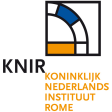Summary
- L’Amastuola intensive and systematic field surveys are part of a research project carried out by the Archaeological centre of the Vrije Universiteit of Amsterdam (ACVU) between 2003 and 2005 in and around the Archaic settlement of L’Amastuola (15 km North-west of Taranto). The aim of the excavations and surface surveys is to shed new light on the occupation history of the site and on the nature of the relationship between greek colonists and indigenous populations in the settlement. The surveys are conducted at various geographical scales: the first level is constituted by the site of L’Amastuola and its immediate environs; the second level of analysis is constituted by the wider regional context, which is investigated with the contemporaneous “Murge Tableland project” (see Burgers, Recchia 2009). These surveys together offer the possibility to study the site of L’Amastuola in its specificity and in its regional context and to define the extent of the Archaic settlement and its spatial and functional arrangement.
Project Dates
- 2003 - 2005
Periods
- No period data has been added yet
- 1400 BC
- 700 BC
- 400 BC
- Field surveys at L’Amastuola are carried out using a method that was developed and employed in the context of the ‘Salento Isthmus project” and the “Regional Pathways to Complexity project”. Intensive, systematic field surveys in the selected area are carried out at various geographical scales: the first level is constituted by the site of L’Amastuola, the second one by the southern part of the Murge plateau. In the area of L’Amastuola and in its immediate environs an artificial grid is laid out all over the area and an artefact survey is conducted, which is intended to highlight the fluctuations in density of the artefact classes present. The sample areas are surveyed with a systematic approach and in gridded units at 10 m intervals (resulting in a 20% coverage of the area) by teams of surveyors and all artefact are collected per unit. Further passes are employed in order to map and sample particular anomalies encountered during the first pass: the aim of the second samples is to collect additional diagnostic materials and to determine the density of materials at different points. In addition, density distribution maps are produced by calculating the true surveyed area of each unit in the GIS, and dividing the raw counts by the recorded percentage coverage and the true unit area in hectares; also, other corrections (e.g. for aggregate finds visibility) are evaluated for every single field.
Other Comments
- Research Director: Gert-Jan Burgers (VU Amsterdam). Other team members: Dorota Biesiekirska (analysis of pottery from survey), Bert Brouwenstijn (object drawing and photography), Jaap Fokkema (surveyor), Douwe Yntema (advisor, pottery analysis), Gerard van Aalbersberg (geo-archaeological research), Karel-Jan Kerckhaert (geophysical prospection), Daphne Lentjes (botanical analysis, 2004-5), Filiz Songu (pottery analysis, 2003), Jitte Waagen (survey of cemetery). Survey team leaders: Martijn Kalkwarf, Maurice de Kleijn, Francesca Laera, Jeremia Pelgrom, Michele Roccia and Yolande Spoelder. ................................................................................................................................ This record has been produced by the Fasti Online Survey team within the framework of the KNIR student internship 2020 'Digital Field Survey Archaeology'.
- L’Amastuola field surveys are employed in order to collect data on a wide geographical and chronological scale. In particular, the project attempts to define the total extent of the Archaic site of L’Amastuola and the organization and exploitation of its catchment area and, on a different level of analysis, to investigate regional systems and in particular the possibility of differentiation in the human arrangement of the Murge landscape.
- Faculty of Arts of the Vrije Universiteit Amsterdam and Netherlands Organization for Scientific Research (NWO)
- Archaeological centre of the Vrije Universiteit of Amsterdam (ACVU) and Soprintendenza Archeologica della Puglia
Director
-
Director
- G.-j. L.m. Burgers




![Edit [ed]](/survey/skins/fastisur/images/plusminus/edit.png)
![View [view]](/survey/skins/fastisur/images/plusminus/view.png)